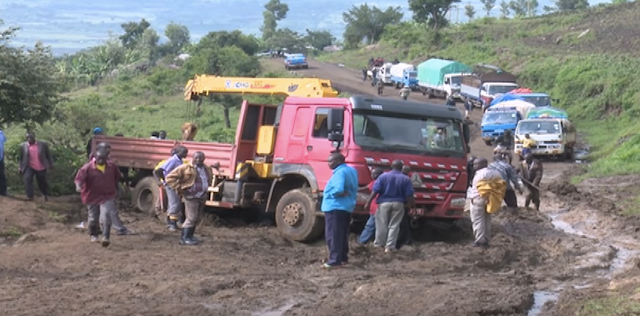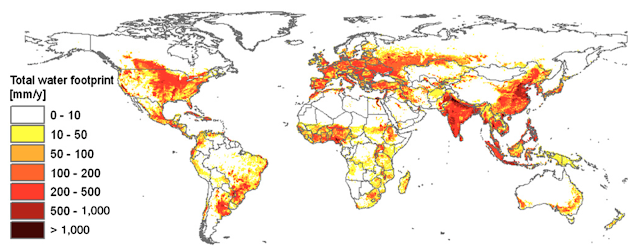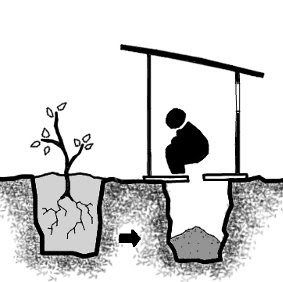Citrus Agriculture: A Case Study of Kat River Catchment, South Africa
Riverside Citrus Agriculture on Kat River Valley (Source: Lona)
The Kat River
Citrus is the dominant agriculture produce and contributes to the largest component of water uses in the Kat River Catchment (Farolfi and Abrams 2005; Mbatha and Antrobus 2011) in the Eastern Cape which is the second highest citrus production area of South Africa. Previous studies along the Kat River have examined historical changes and conflicts that led to community-driven activities utilizing the environment (Nel and Hill 2000), water uses and social-economic impact (Farolfi and Abrams 2005) and challenges to agriculture development (Mbatha and Antrobus 2011). Along the Kat River, a multi-arch dam has also been constructed in 1969 in the Upper Kat to manage water resources. This post will highlight human-environmental relationships, look at Integrated Water Resource management(IWRM) and dilemmas.
Human-river relationships and feedbacks
Since water resources are extracted for shared uses from the catchment, it can be treated as commons but there is an understanding of unequal distribution and access from the Upper to Middle and Lower Kat. For example, the Lower Kat users are more vulnerable to water quality and salinity as compared to upstream users. Sub-subsistence farmers occupy the Upper Kat whereas large-scale and emerging farmers engaging in citrus agriculture are mainly found in the middle and lower kat (Refer to Figure 1). Despite water available for citrus agriculture, households consider the quality of river water bad for domestic use because of its multiple shared uses (E.g. Washing, livestock, Septic tanks, untreated wastewater) but could not afford private taps (Farolfi and Abrams 2005). Generally, this meant that more water use by any sector or their outputs into the systems will have a negative impact on the availability of water for others, thus affecting or limiting productivity or availability for domestic use.
Integrated Water Resource Management
To address needs, issues and management of the catchment, the South African Water Research Commission (WRC) and local village communities piloted one of the first few Water User Association (WUA) in South Africa and the Kat River Catchment forum to facilitate effective participation of stakeholders through a companion modelling approach (Farolfi and Rowntree 2005). This was understood as largely successful in overcoming previous social and economic conflicts (Nel and Hill 2000), among groups and users of the catchment as distant communities are brought together collectively. As stakeholders are held jointly responsible for water quality and environmental health which are recognized as a necessity for sustainable development, the importance of “felt need” for successful collaboration is fulfilled. In a way, the destructive scenario in the Tragedy of the Commons (Hardin 1968) by community-driven activities is potentially prevented and addressed by coercive laws and relying on finding ways through mutual agreements in IWRM.
Commercial Citrus Agriculture Expansion
Today, compelling stories of commercial citrus agriculture are being told. For example, Lona Citrus export company catalyzed rural development projects and linked fruit marketers with previously disadvantaged farms under a mutually beneficial partnership where skills, fruit quality and volumes can be improved. They also mentioned that their fruit production model can be “replicated in other regions of South Africa”. Another recent example is Eden Agri Citrus, whose ambassador portrays their citrus packhouse as a “beacon” for neighboring communities in hope of expanding citrus production for export in the area along Kat River.
Indeed, agricultural growth and employment potential shows that citrus demonstrates high growth potential (Genis 2018). For example, back in 2005, labour in citrus farms had come from unemployment in the Kat catchment which reached 80% (Farolfi and Abrams 2005). However, expansion of production are often constrained by availability of water, land, capital and market access(Genis 2018). Apart from providing employment, citrus agricultural cooperation’s have to address issues such as fair wages and the new minimum wage in South Africa otherwise they potentially face a wage strike like that of Sunday’s River valley citrus industry.
The Dilemma
It is also important to recognize that in light of romanticized images of commercial citrus agriculture expansion, there may be a potential for communities to be marginalized due to the exploitative nature of profit-driven agriculture. Consequently, we should question if this would lead to an inherent environmental impact (soil quality, erosion etc.), the degradation of commons or the changes in water footprint. Evidently, in a different catchment southwest of the Kat River, particularly in the Lower Sundays River Valley where citrus agriculture is also dominant, there is infrastructural water scarcity resulting from municipality failure to meet demands to households and high level of nitrogen in run-offs (Munro et al. 2016). In such cases, IWRM plays a potentially crucial role in the negotiation of catchment management and involvement of users or stakeholders responsible for the quantity and quality of water in a catchment.
While unable to fully encapsulate the past and ongoing situations of citrus agriculture in Kat River Catchment, I hope that I have shed some light on the relations associated with agricultural crops commodity and that its narrative can be better appreciated through its environment and social settings.
This brings us to the next dilemma. Should citrus agriculture commodification be promoted for agriculture growth, development and employment? And thus encouraging large-scale citrus production at the expense of the environment and environmental citizens? Indeed, it is difficult to ignore that the competition for water resources in the future may be exacerbated by a capitalistic exploitation of river for commercial agricultural.
Lastly, Mbatha and Antrobus (2011) concludes that the takeaway lesson is that policies should not be replicated and implemented solely base on its previous success. This is understood by the fact that the Kat River Catchment illustrates development processes, agriculture changes and human-nature relationships that are complex and the difficulty of balancing socio-economic benefits and environmental sustainability to attain ideal situations are different in various geographical and social context.
References
Farolfi, S., & Abrams, M. (2005). Water uses and their socio-economic impact in the Kat river catchment: A report based on primary data: WRC Project n° K5/1496.
Farolfi, S., & Rowntree, K. (2005). Accompanying local stakeholders in negotiation processes related to water allocation through simulation models and role-playing games: an experience from South Africa.
Genis, A. (2018). Oranges and labourers: The potential for job creation in the citrus sub-sector of South Africa.
Hardin, G. (1968). The tragedy of the commons. science, 162(3859), 1243-1248.
Mbatha, C. N., & Antrobus, G. G. (2011). Physical, political and local practice factors as barriers to agricultural development: A case of the Kat River valley, South Africa. Open Geography Journal, 4(1), 91-102.
Munro, S. A., Fraser, G. C., Snowball, J. D., & Pahlow, M. (2016). Water footprint assessment of citrus production in South Africa: A case study of the Lower Sundays River Valley. Journal of Cleaner Production, 135, 668-678.
Nel, E. L., & Hill, T. R. (Eds.). (2000). An evaluation of community-driven economic development, Land Tenure, and sustainable environmental development in the Kat River Valley. HSRC Press.
x
x









A thoughtful, reflective and engaging blogpost. Looking forward to reading more. Your last point touches on a very challenging aspect of water development - recognition of the strong local, contextual controls that determine success of interventions. It is something for all of us blogging to be aware of the danger of generalising! Finally, be very wary of the facts that company website offers - it is why the peer-reviewed literature is so invaluable at getting closer to what may be the truth.
ReplyDeleteHello Prof. Taylor, Thank you for reading this blogpost and giving feedbacks. I think it was nice looking at how some of these companies portray themselves to its viewers and make certain claims. However, as you have pointed out, it is important to be wary of the facts company website offers. I agree as some of these corporations may exert claims on their website that maybe overpromising, not actually testified and make me reflect again if that is actually the case. Indeed, peer-reviewed literature offers a wealth of insights such as actual quantifiable results and qualitative impacts. Thanks again!
ReplyDelete